Unravelling the mystery of the ‘Fiji Mermaid’: Scans confirm bizarre creature discovered in Japan is part fish, part monkey, and part reptile
>
Scientists explore a strange ‘mermaid’ that appears to be part fish, part ape and part reptile in a bid to unravel its mysteries.
The mummy was brought from Japan by an American sailor and donated to the Clark County Historical Society in Springfield, Ohio, in 1906.
With a scowling face, strange teeth, oversized claws, a fish-like lower half, and a soft coat of gray hair, he has been giving museum visitors the creeps for decades.
But now its secrets can be revealed, after the so-called mermaid was imaged with X-rays and CT scans for the first time in an attempt to decipher its true nature.
“It appears to be a mixture of at least three different types externally,” said Joseph Kress, a radiologist at Northern Kentucky University.
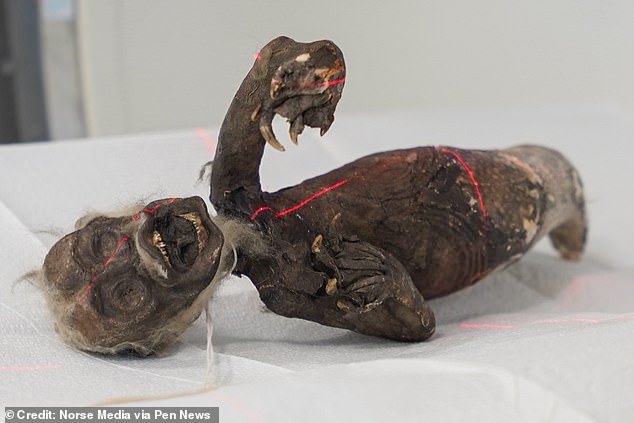
Scientists explore a strange ‘mermaid’ that appears to be part fish, part ape and part reptile in a bid to unravel its mysteries.
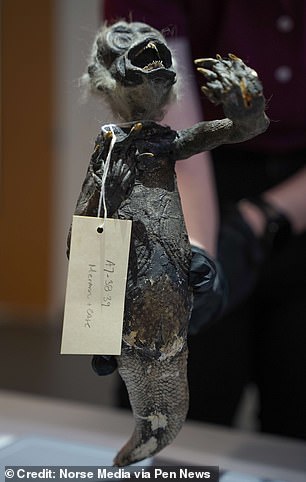
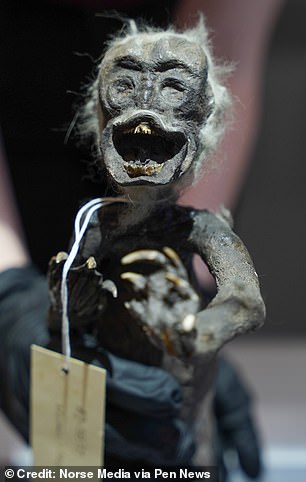
The mummy was brought from Japan by an American sailor and donated to the Clark County Historical Society in Springfield, Ohio, in 1906.
“There is a monkey head and torso, and the hands appear to be almost amphibian hands like an alligator, crocodile or lizard of some sort.
“Then there is the fishtail – again, the species is unknown.”
“It’s clearly designed, almost put together, so I want to know what parts are put together,” he added.
Natalie Fritz of the Clark County Historical Society said the strange object was the “Fiji Mermaid” — a hoax creature popularized by P. T. Barnum.
Barnum, whose life inspired the 2017 film The Greatest Showman, displayed a similar specimen in his American Museum in New York before it burned down in 1865.
In Japan itself, some legends say that mermaids grant immortality to those who taste their flesh.
At one temple in Asakoshi, a Fijian mermaid was actually worshiped – although it later emerged that she was made of cloth, paper and cotton, and decorated with fish scales and animal hair.
But in the United States, such nymphs were a curiosity.
“Fiji mermaids were part of the sets and side shows in the late 1800s,” Fritz said.
“We’ve heard some stories from people in the community.
Some remember seeing it on display in Memorial Hall, home of the Historical Society from 1926 to 1986.
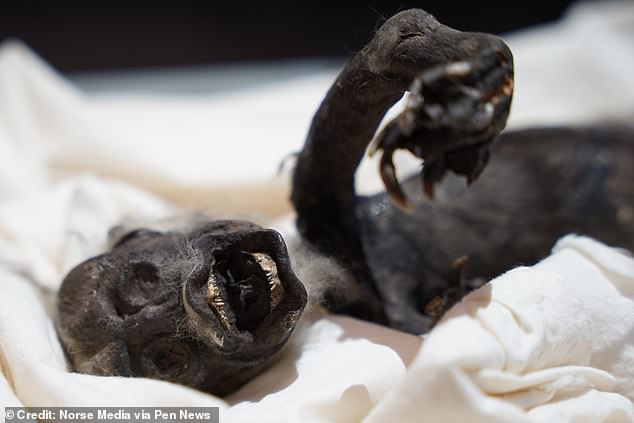
The so-called mermaid has been imaged with X-rays and CT scans for the first time in an attempt to decipher its true nature.
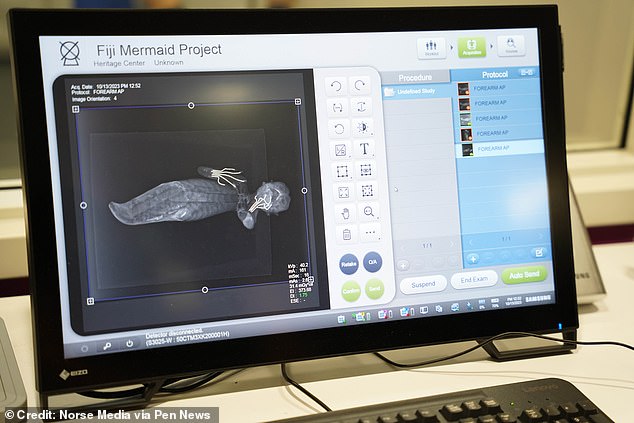
“It appears to be a mixture of at least three different types externally,” said Joseph Kress, a radiologist at Northern Kentucky University.
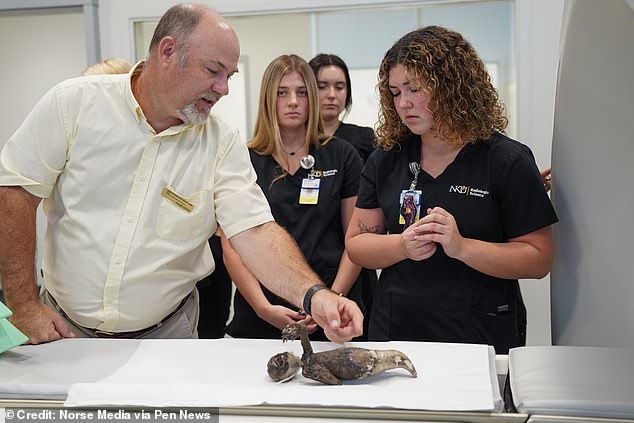
“There’s a monkey head and torso, and the hands appear to be almost amphibian hands like an alligator or alligator or lizard of some sort,” Cross said.
“One woman, whose father was a museum curator in the 1970s, recalls that it ‘scared her to death’ when she was visiting her father at work.”
Fritz added that the mummy could date back to the 1870s, when records showed that the original donor served in the US Navy.
Dr Chris said the CT scan would allow them to capture ‘slices’ of the artefact and hopefully determine whether any part of it was once a real animal.
“By doing that, it gives us more data,” he said.
“Do those nostrils continue to reach what we think is a legitimate nasal cavity, and how deep are they?”
“Because we can see it from front to back and even from side to side.”
“Can you see the ear cavity continuing to where it will then connect to the brain?”
“So we do it for all parts of the Fiji mermaid, not just the head and face area, but also the thoracic area, and then the end of the tail.”
The data will be sent to experts at the Cincinnati Zoo and Newport Aquarium to determine which creatures – if any – were combined to create the mermaid.
(Tags for translation)dailymail
